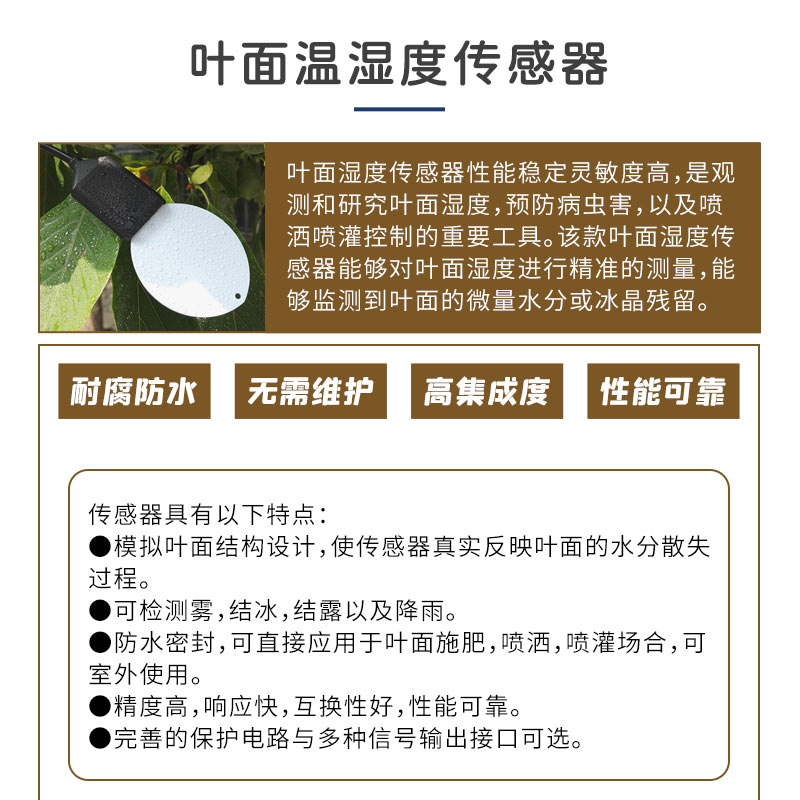Shandong Fengtu IOT Technology Co., Ltd
Sales Manager:Ms. Emily Wang
Cel,Whatsapp,Wechat:+86 15898932201
Email:info@fengtutec.com
Add:No. 155 Optoelectronic Industry Accelerator, Gaoxin District, Weifang, Shandong, China

Sales Manager:Ms. Emily Wang
Cel,Whatsapp,Wechat:+86 15898932201
Email:info@fengtutec.com
Add:No. 155 Optoelectronic Industry Accelerator, Gaoxin District, Weifang, Shandong, China
time:2024-07-08 08:55:00 source:Weather Station viewed:451 time
Plant growth is influenced by a combination of environmental factors, including key elements such as temperature, light, water and soil salinity. These conditions are critical to healthy plant development, and the absence of any one of them can result in stunted growth. As different plant species have unique growth habits, in order to thrive in a variable environment, the interactions between plants and their environment must be explored through scientific methods. This involves not only adapting plants to the environments in which they are found, but also adjusting the environmental conditions to meet the plant's growth needs.
In the study of plant physiological ecology, macro-level analyses usually involve the observation of plant populations or communities. The researcher will select a representative sample of individuals or multiple plants for continuous growth monitoring. Common metrics monitored cover stem growth rate, canopy temperature, and leaf humidity. In addition, plant growth is closely linked to environmental factors such as water availability in the soil, so monitoring soil environmental parameters is also an indispensable part of the process.
Continuous monitoring of plant physiological indicators is important for irrigation management decisions, automated agricultural control, and long-term ecological research. These monitoring data enable a more accurate understanding of plant growth requirements and timely adjustment of irrigation and fertilisation strategies, thus optimising plant growth conditions and improving agricultural productivity and ecological protection.
The foliar temperature and humidity of plants have a direct impact on their ability to resist pathogens. If foliar temperature and humidity are too high, they tend to harbour pathogens and increase the risk of plant disease. Pollutants may also attach to wet leaves, further altering their humidity and affecting plant health.
The use of foliar temperature and humidity sensors can accurately monitor these conditions, helping farmers identify potential problems in time to take steps to prevent pests and diseases and protect plants from normal growth.
Foliar temperature and humidity sensors are easy to install. You simply place the sensor near a crop or leaf, use a non-metallic wire to pass through the hole in the front of the sensor, and hang it from the plant's branch through this wire. The installation is then completed by securely fixing the sensor to the branch or stalk with wire or similar material.
This method of installation is both quick and efficient, ensuring that the sensors are able to accurately capture temperature and humidity data from plant leaves, providing real-time monitoring for plant health management.

Wind speed, the speed at which air moves, is a key parameter in meteorology. When the difference in air pressure between two places increases, the speed of air movement increases, resulting in an increase in wind speed and an increase in the force of the wind. For this reason, it is common to use wi...
Automatic weather stations are widely used in China, not only in agricultural management, but also in industrial production, open-air stacking of materials, environmental monitoring, traffic safety, meteorological early warning and other fields. With the continuous improvement of science and technol...
In the photovoltaic industry, measuring the power of photovoltaic (PV) modules is crucial for accurately assessing their power generation capacity and performance. This enables manufacturers to ensure product quality compliance, while maintenance personnel can promptly detect changes in module perfo...
Park air quality monitoring station is an important part of urban garden construction in my country, and its main function is to monitor the concentration and distribution of air pollutants in parks. With the continuous acceleration of urbanization and the rapid growth of urban population, the probl...